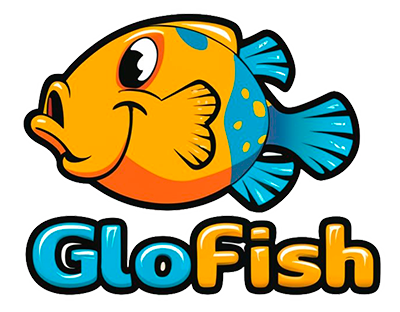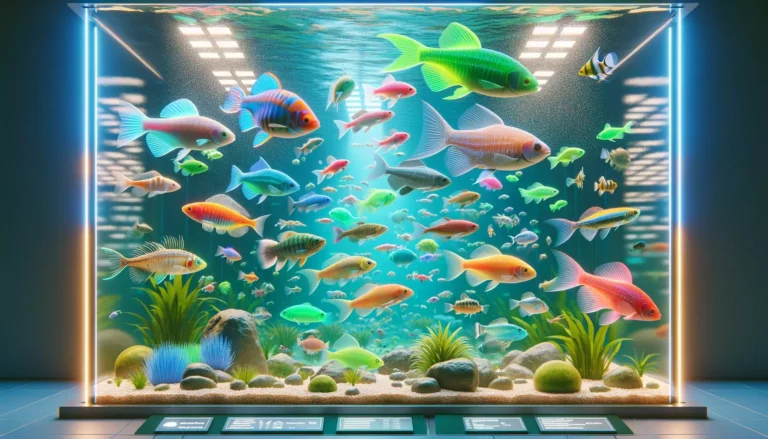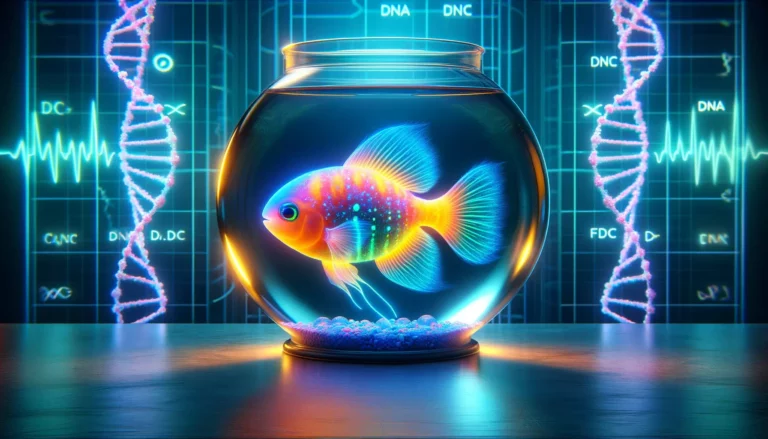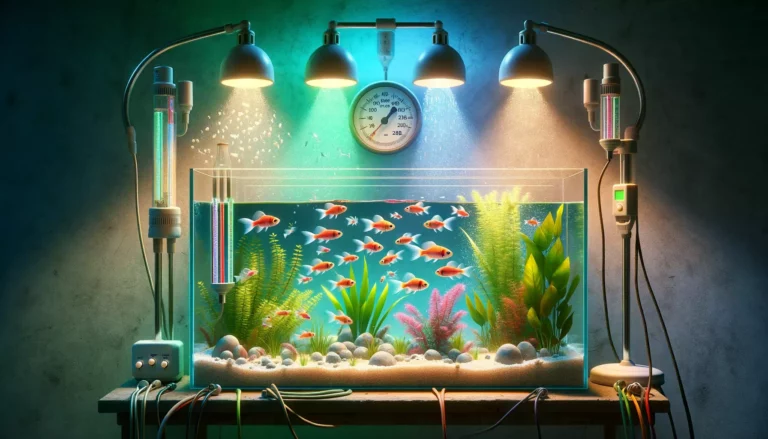Important Events and Discoveries Associated with GloFish
GloFish were first created in the early 2000s. Their origin traces back to scientific research. Scientists at the National University of Singapore aimed to create a fish that could detect pollution. They introduced a gene from jellyfish into zebrafish embryos. This gene made the fish glow in the presence of pollutants. Their initial purpose was environmental monitoring, not pet trade. But soon, their unique appearance caught the public’s eye. This led to their introduction in the aquarium trade.
The GloFish we see today are not used for environmental monitoring. They are bred for their aesthetic appeal. GloFish come in a variety of bright colors. These include red, green, orange, blue, and purple. Their fluorescent colors are a result of genetic modifications. These modifications are stable and inherited by offspring. GloFish were the first genetically modified animals to become publicly available as pets.
Mechanism of GloFish’s Glowing Characteristics
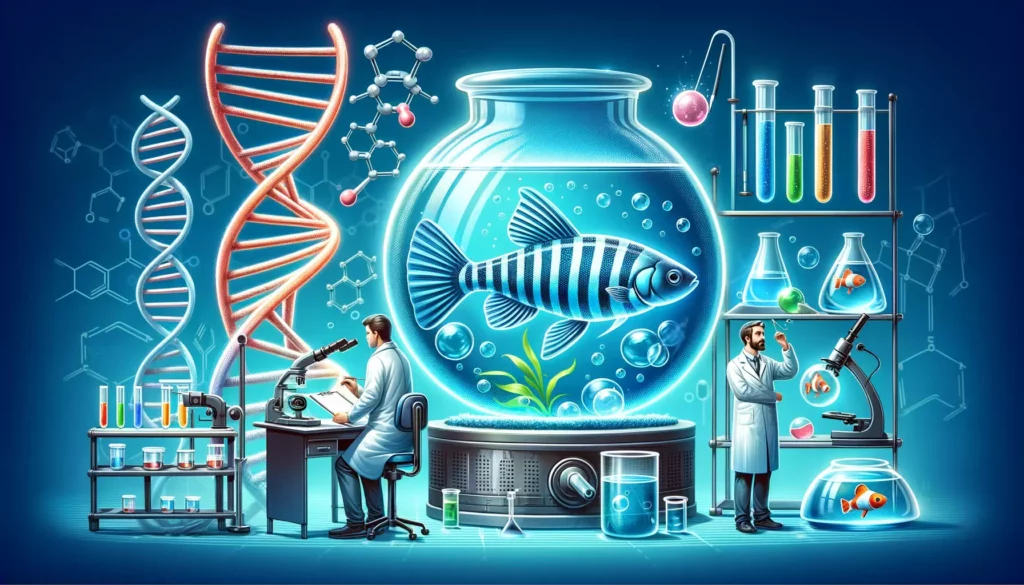
GloFish exhibit their glowing characteristics through fluorescence. This is a process where light is absorbed and re-emitted. Fluorescent proteins are responsible for their glow. These proteins originate from marine organisms. For example, the green fluorescent protein comes from jellyfish. Red and orange proteins come from corals and sea anemones.
When exposed to ultraviolet or blue light, GloFish absorb this light. They then emit it in visible wavelengths. This is what makes them appear to glow. Their colors are most vibrant under blue or black light. However, they are still noticeable in normal light.
The process is entirely genetic. The inserted gene codes for the fluorescent protein. This gene is integrated into the fish’s genome. It is expressed in various tissues, leading to the glowing effect. The fluorescence is harmless to the fish. It does not affect their health or lifespan.
Genetic Modifications in GloFish
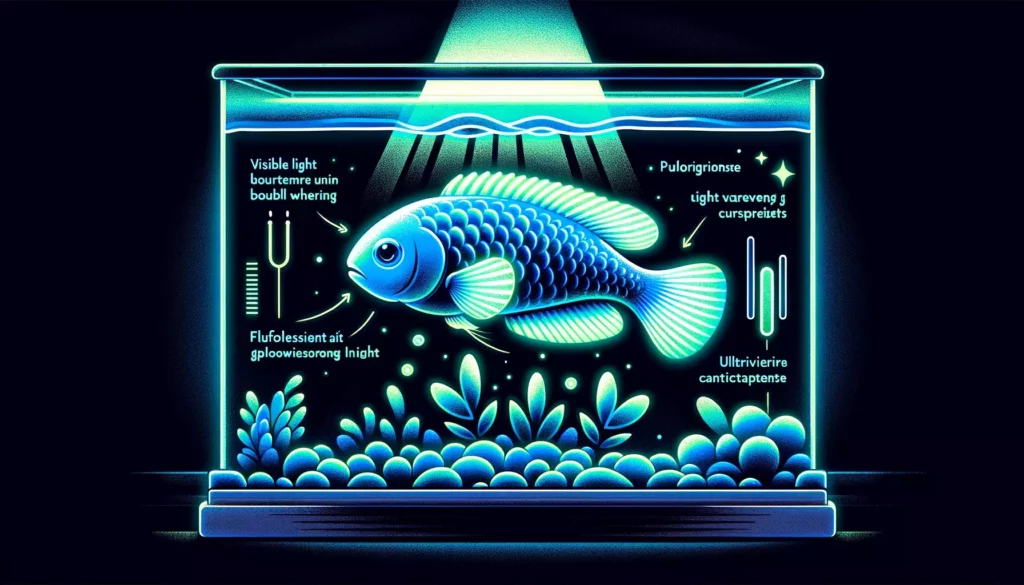
GloFish are a result of precise genetic modifications. These modifications involve inserting a foreign gene into their DNA. The gene responsible for fluorescence comes from marine organisms. For example, jellyfish or coral. This gene makes them produce fluorescent proteins. These proteins give GloFish their vibrant colors.
The process starts at the embryonic stage. Scientists inject the gene into zebrafish embryos. Once the gene integrates into the genome, it becomes a permanent part of the fish’s DNA. This means it can pass to future generations. These genetic modifications do not harm the fish. They grow and behave like regular zebrafish.
It’s important to note that GloFish are not dyed or injected with colors. Their coloration is entirely genetic. As technology advances, new colors and patterns may emerge. The genetic engineering in GloFish represents a significant step in biotechnology. It shows how specific traits can be selected and introduced into living organisms.
Introduction of GloFish to the Public Market
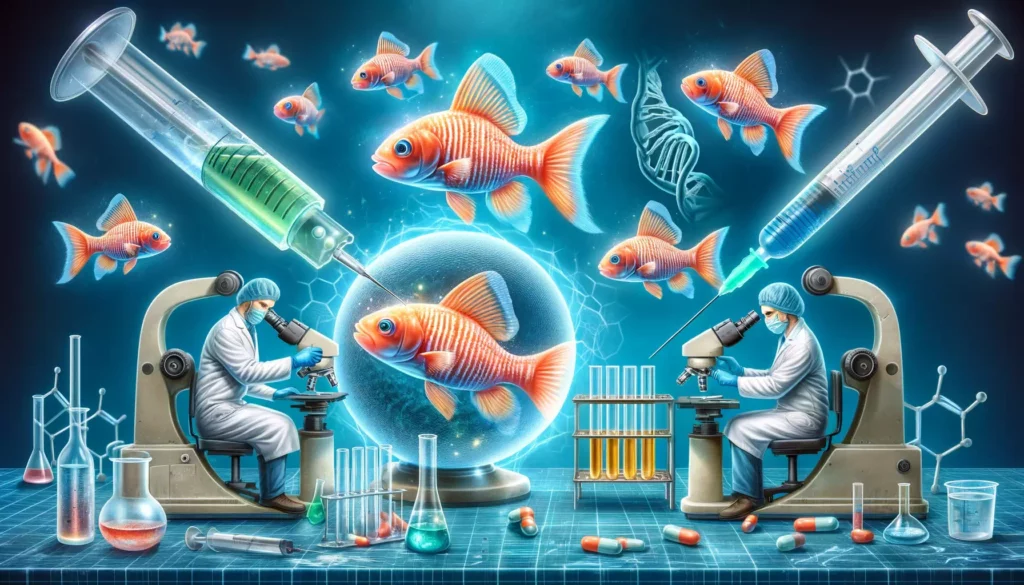
GloFish were first introduced to the public market in 2003. Their introduction marked a significant event in the pet industry. GloFish were the first genetically modified animals sold as pets. They were initially available in one color – Starfire Red. This color was achieved by introducing a sea anemone gene.
Their introduction sparked a debate. Some raised concerns about ethical and environmental implications. However, GloFish were deemed safe for pet trade. They are sterile and cannot breed with wild zebrafish populations. This reduces the risk of ecological impact.
The market for GloFish rapidly expanded. They became popular for their unique appearance. Now, GloFish are available in multiple colors. These include Electric Green, Sunburst Orange, and Moonrise Pink. They are sold in many countries. However, some places like the European Union have restrictions on genetically modified organisms (GMOs).
GloFish’s introduction to the market was a milestone in biotechnology and the pet trade. It opened doors for further genetic research and the development of other GMO pets.
Ethical Debates and Controversies Surrounding GloFish
The creation and sale of GloFish have sparked ethical debates. The main concern is the manipulation of genetic material. Critics argue that it’s unnatural to modify animals for aesthetic purposes. They worry about the welfare of the fish. However, scientists insist that GloFish are as healthy as regular fish. They emphasize that the genetic modifications do not harm them.
Another concern is about setting a precedent for future genetic modifications. Some fear it could lead to more extreme changes in animals. There is also a worry about the environmental impact. If GloFish were released into the wild, they could affect ecosystems. However, GloFish are bred to be sterile. This minimizes the risk of breeding with wild populations.
Supporters of GloFish highlight their potential benefits. They point out that GloFish could aid in scientific research. They also argue that GloFish are no different from other selectively bred pets. Overall, the GloFish debate reflects larger issues in biotechnology. It raises questions about human intervention in nature and animal welfare.
Impact of GloFish on the Aquarium Trade and Hobby
GloFish have had a significant impact on the aquarium trade and hobby. They brought a surge of interest to the aquarium world. Their bright colors and unique appearance attract many enthusiasts. This has led to increased sales in aquariums and related products.
GloFish are particularly appealing to beginners. Their care requirements are similar to regular zebrafish. This makes them a good choice for new aquarium owners. They also offer a new aesthetic dimension to aquariums. This has led to a wider range of decorative options for hobbyists.
However, there has been some backlash from purists. Some traditionalists in the aquarium community prefer natural fish breeds. They view GloFish as a gimmick. Despite this, the popularity of GloFish continues to grow.
GloFish have also influenced the breeding and sale of other ornamental fish. They’ve shown that there is a market for genetically modified pets. This could lead to more innovations in the industry. In summary, GloFish have reshaped the landscape of the aquarium trade, introducing new dimensions of both interest and debate.
Regulations on Breeding and Sale of GloFish
The breeding and sale of GloFish are subject to specific regulations. These regulations vary by country and region. In the United States, the FDA oversees GloFish regulation. The FDA determined that GloFish pose no more risk than their non-modified counterparts. Therefore, they do not require special regulation. However, individual states can impose their own restrictions. For example, California initially banned GloFish but later allowed their sale with a permit.
| Country/Region | Regulatory Authority | Regulations |
|---|---|---|
| United States | FDA | – FDA oversees GloFish regulation. |
| – FDA determined GloFish pose no more risk | ||
| than non-modified counterparts. | ||
| – Individual states can impose their own | ||
| restrictions. For example, California | ||
| initially banned GloFish but later allowed | ||
| their sale with a permit. | ||
| European Union | EU Regulations | – Stricter rules on genetically modified |
| organisms (GMOs), including pets like GloFish. | ||
| – GloFish not widely available in European | ||
| markets due to EU regulations. | ||
| Company Regulations | GloFish Technology | – The company that created GloFish holds |
| patents and rights to the technology. | ||
| – Unauthorized breeding and sale can result | ||
| in legal action. | ||
| – All GloFish sold are sterile to prevent | ||
| potential ecological impact if accidentally | ||
| released into the wild. |
In other countries, the situation might be different. The European Union, for instance, has stricter rules on genetically modified organisms (GMOs). This includes pets like GloFish. As a result, GloFish are not widely available in European markets. Each country’s stance on GMOs influences the availability of GloFish.
The breeding of GloFish is generally controlled by the company that created them. They hold patents and rights to the GloFish technology. This means unauthorized breeding and sale can result in legal action. The company also ensures that all GloFish sold are sterile. This is to prevent any potential ecological impact if they were accidentally released into the wild.
Environmental Concerns Related to GloFish in Natural Habitats
Environmental concerns surrounding GloFish mainly involve their potential impact on natural habitats. The primary worry is about their release into the wild. If GloFish were to breed with wild fish, it could disrupt local ecosystems. This is a concern with any non-native species. However, GloFish are bred to be sterile. This significantly reduces the risk of them breeding in the wild.
Researchers also study how GloFish would survive in natural environments. Studies suggest that their bright colors could make them more visible to predators. This would likely decrease their chances of survival in the wild. Despite this, the precautionary principle is often applied. Conservationists argue for strict control to prevent any accidental release.
Another concern is about the broader implications of genetic modifications. There is a fear that this technology could be used irresponsibly. This could lead to ecological imbalances. To address these concerns, continuous monitoring and research are necessary. This ensures that the introduction of GloFish, and similar organisms, is done responsibly and sustainably.
